Table of Contents |
This lesson focuses on the architecture of the 16th century in the cities of Rome and Vicenza (outside Venice) in Italy.
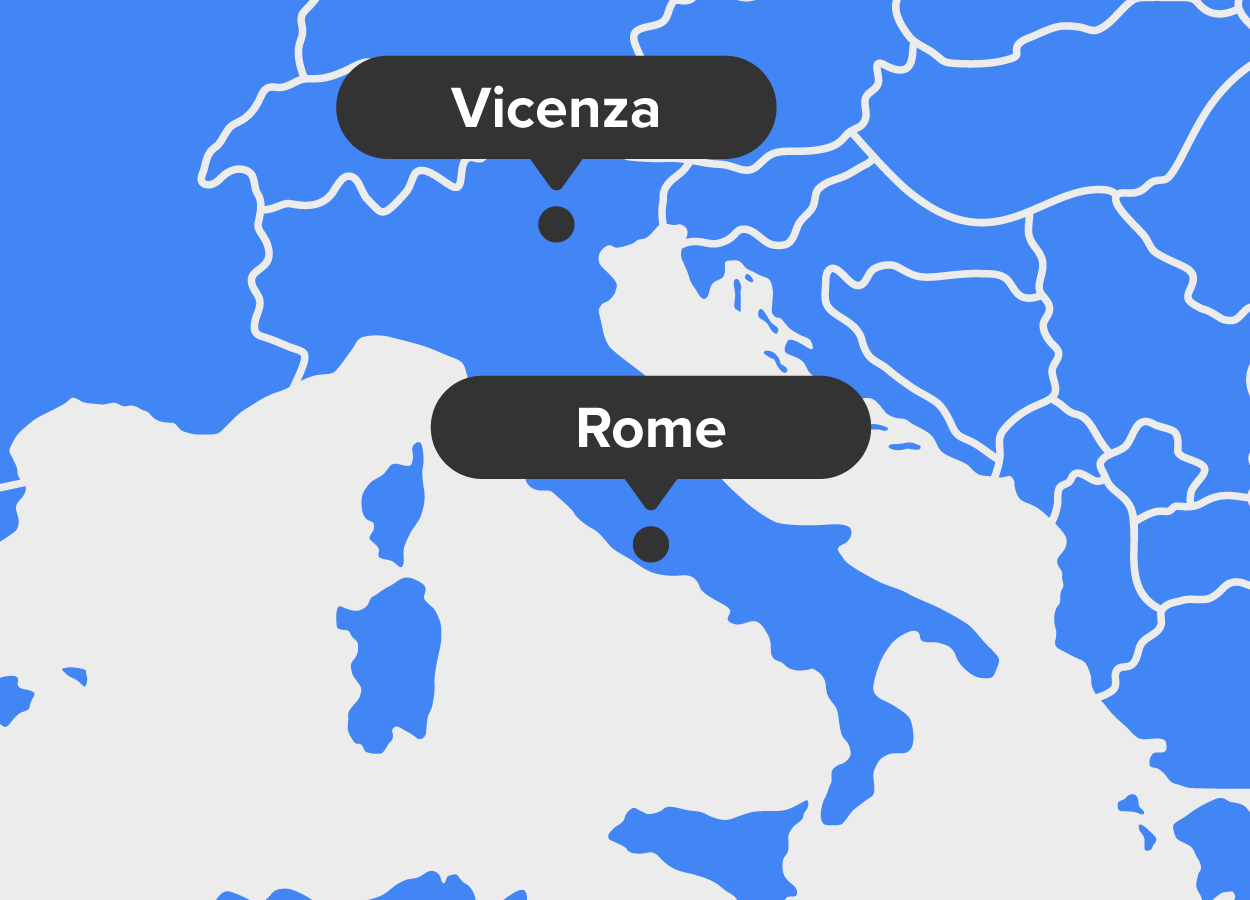
Donato Bramante (1444–1514) was a visionary architect whose work left an indelible mark on Renaissance Architecture. Among his most notable works are the initial designs for St. Peter's Basilica and the Tempietto, or Little Temple, in the courtyard of San Pietro in Montorio in Rome.
Below is a woodcut of the Tempietto created later by Andrea Palladio.
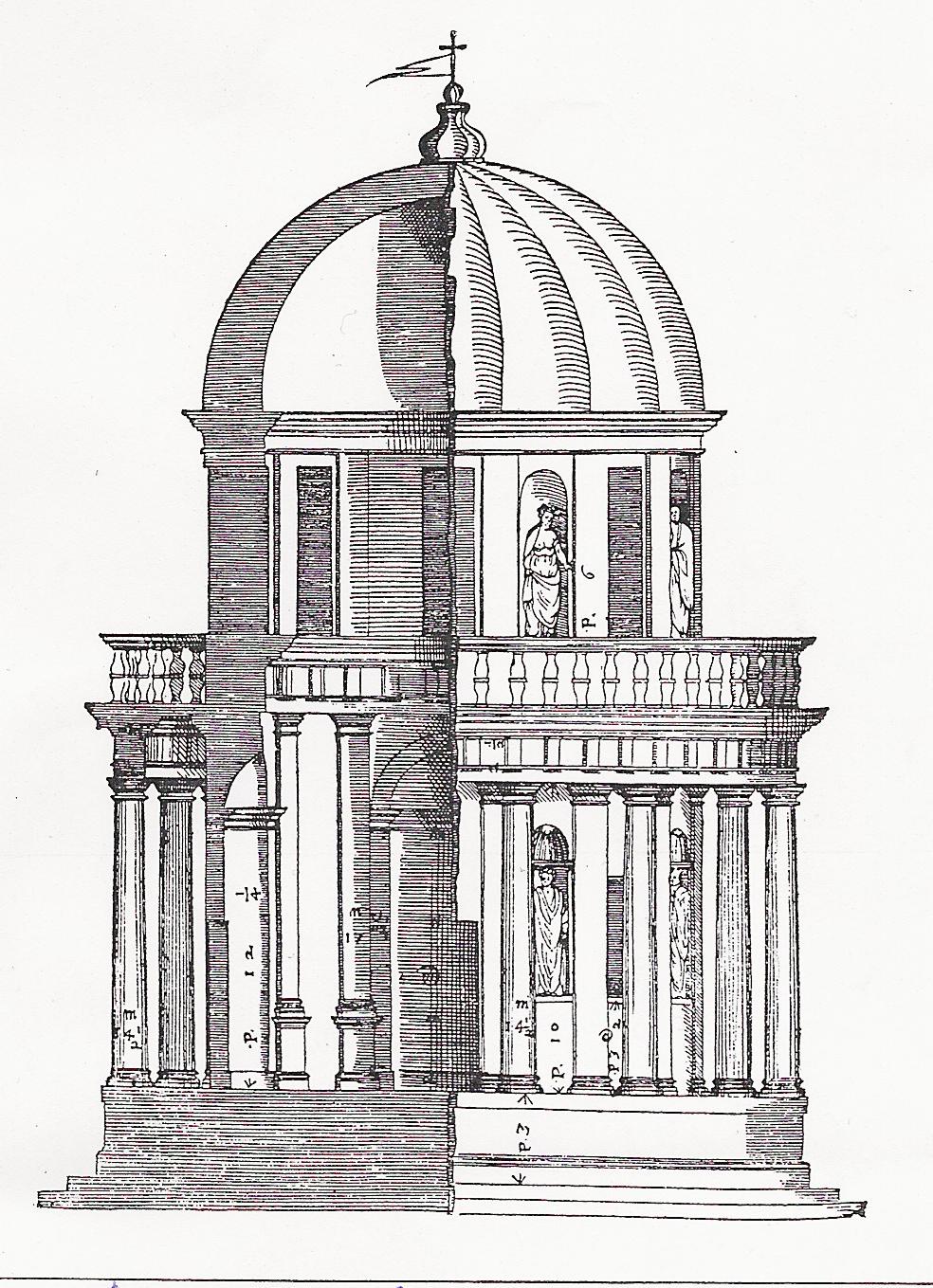
Woodcut of the Tempietto
Rome
1570
Woodcut
The Tempietto marks the traditional location of Saint Peter’s crucifixion. As the name suggests, it’s a small building that functions more as a sculpture than architecture. It’s inspired by the design of smaller, circular Greek shrines and round Roman temples like the Temple of Vesta and the Pantheon. This piece of architecture incorporates the elements seen in larger monumental structures of the time. This is done, however, in a condensed version that still manages to be fresh and original.
Although classically inspired, the execution is stylistically Renaissance. This is evident in the combination of well-proportioned architectural elements that wouldn’t have been used in antiquity, such as the drum and balustrade combination.
Here is a closeup of the colonnade:
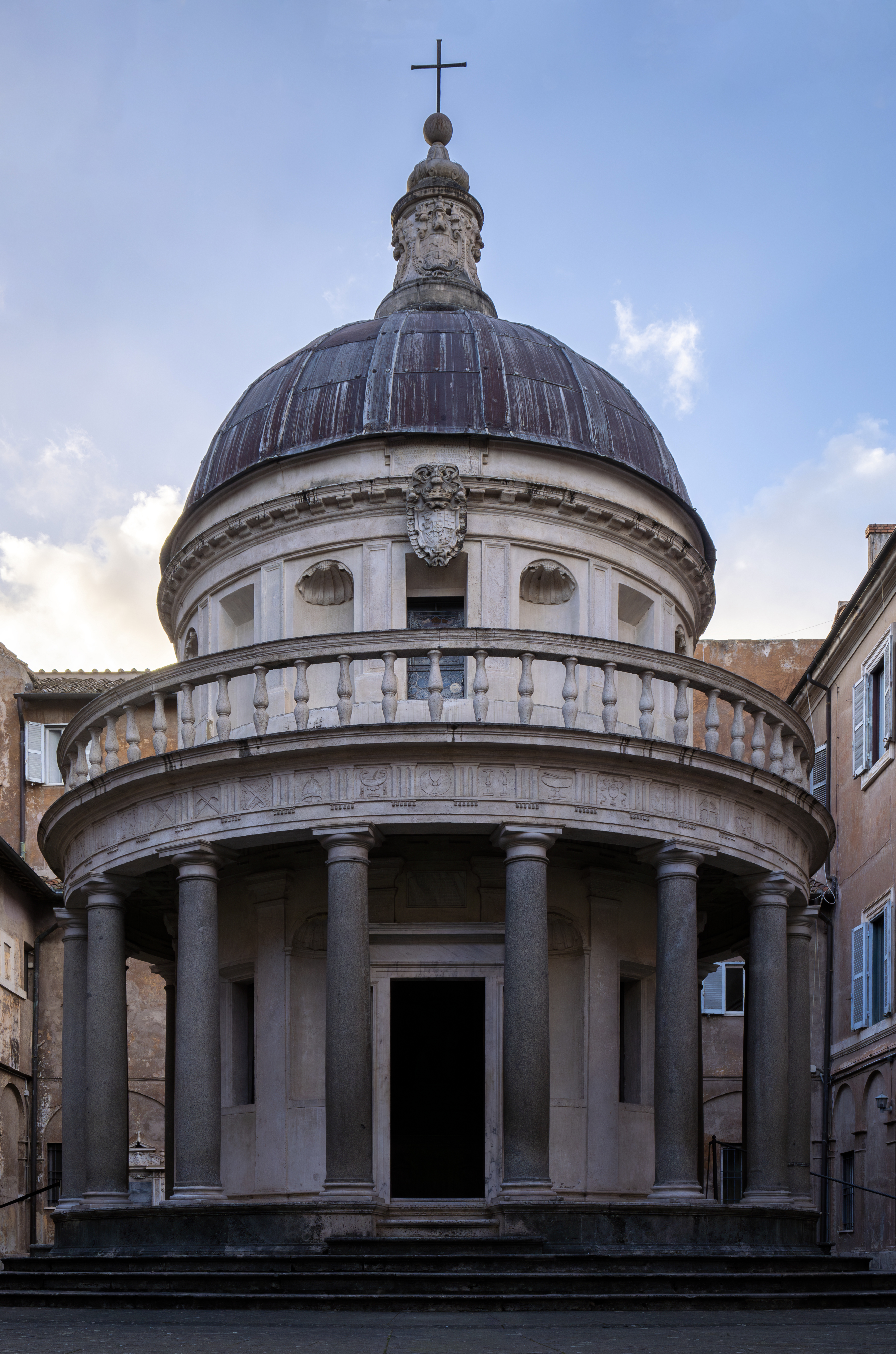
Colonnade of the Tempietto
Rome
1502–1506
Bearing masonry
Bramante’s talent landed him the opportunity to design the replacement for the older Early Christian basilica-style church of Saint Peter’s Basilica in Rome.
Below is an image of these plans.
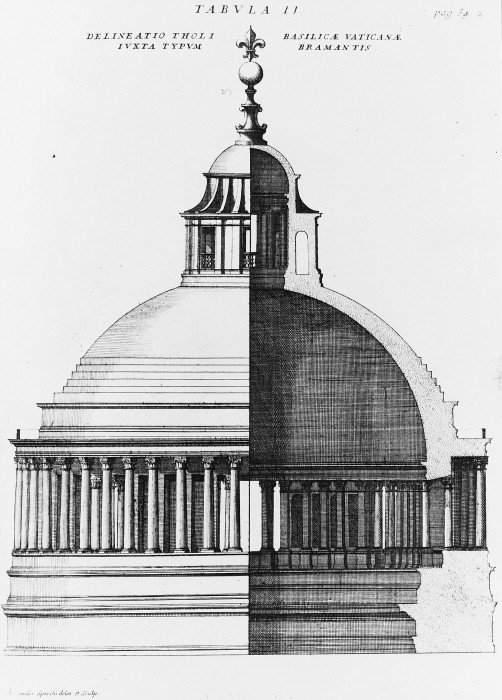
Plan for the dome of Saint Peter’s Basilica
Rome
1506
Drawing
Bramante’s original design was for a central-plan church, like a Greek cross, with a hemispherical dome. Upon Bramante’s death, the architectural responsibilities were passed to Michelangelo.
Michelangelo had firmly established his reputation as a master architect earlier, completely redesigning the Piazza Del Campidoglio in Rome, also known as Capitoline Hill, beginning in 1536.
His design is shown here:
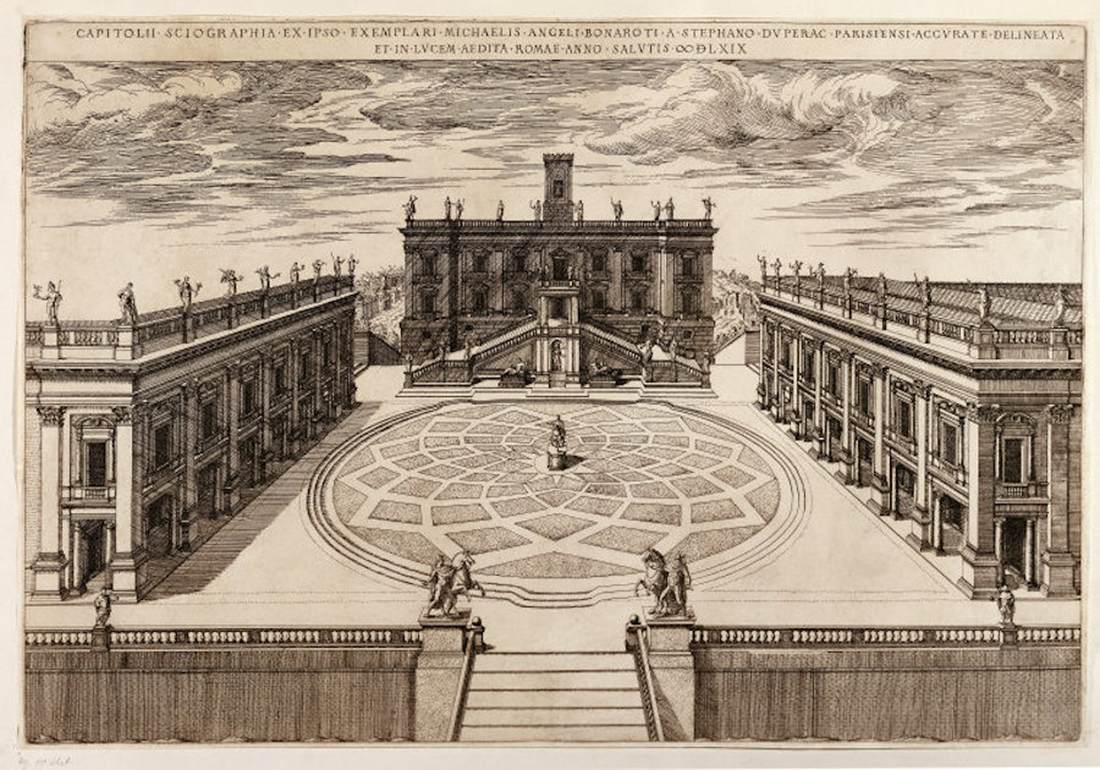
Redesign of Capitoline Hill
Rome
1569
Etching and engraving
Michelangelo reworked the piazza to face toward St. Peter’s Basilica rather than the previous direction facing the ruins of the Roman forum.
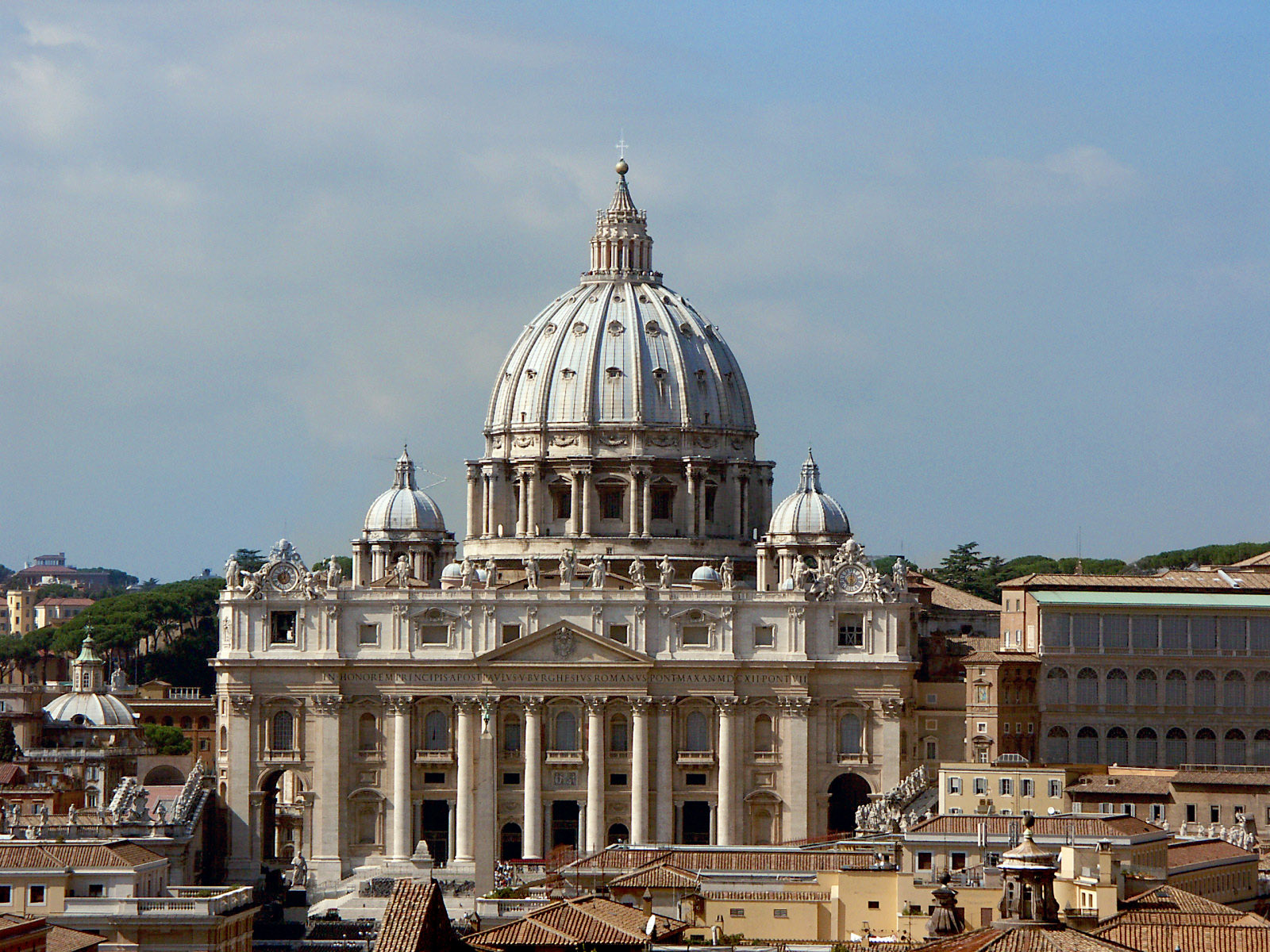
Saint Peter’s Basilica
Vatican City
1506–1626
Michelangelo was so impressed with Bramante’s work that he decided to expand upon Bramante’s original designs for St. Peter’s. Michelangelo maintained the central-plan church style with some adjustments. Most notably, he changed the overall design of the dome from hemispherical to ogival, like the magnificent dome of the Florence Cathedral that was designed by Brunelleschi in the previous century.
In the Venetian Republic, near Vicenza, the artist Andrea Palladio was busy building a major career as an artist that would eventually spread his influence outside of Italy to areas as far away as England and the United States. He was well known for his work on villas for wealthy citizens of the bustling Venetian economy. Palladio's works were inspired by the principles of ancient Roman architecture, and he meticulously studied the ruins of Rome to inform his designs.
His most famous villa, La Rotonda, stands as one of his most influential designs.
Villa Almerico Capra, known as Villa La Rotonda
Vicenza, Italy
Began 1567
It was built on a hilltop with a central-plan design that featured four porches inspired by Roman temple porticos, such as that of the Pantheon. Each had a different beautiful view, or belvedere of the surrounding countryside, but the architectural elements on each porch were identical.
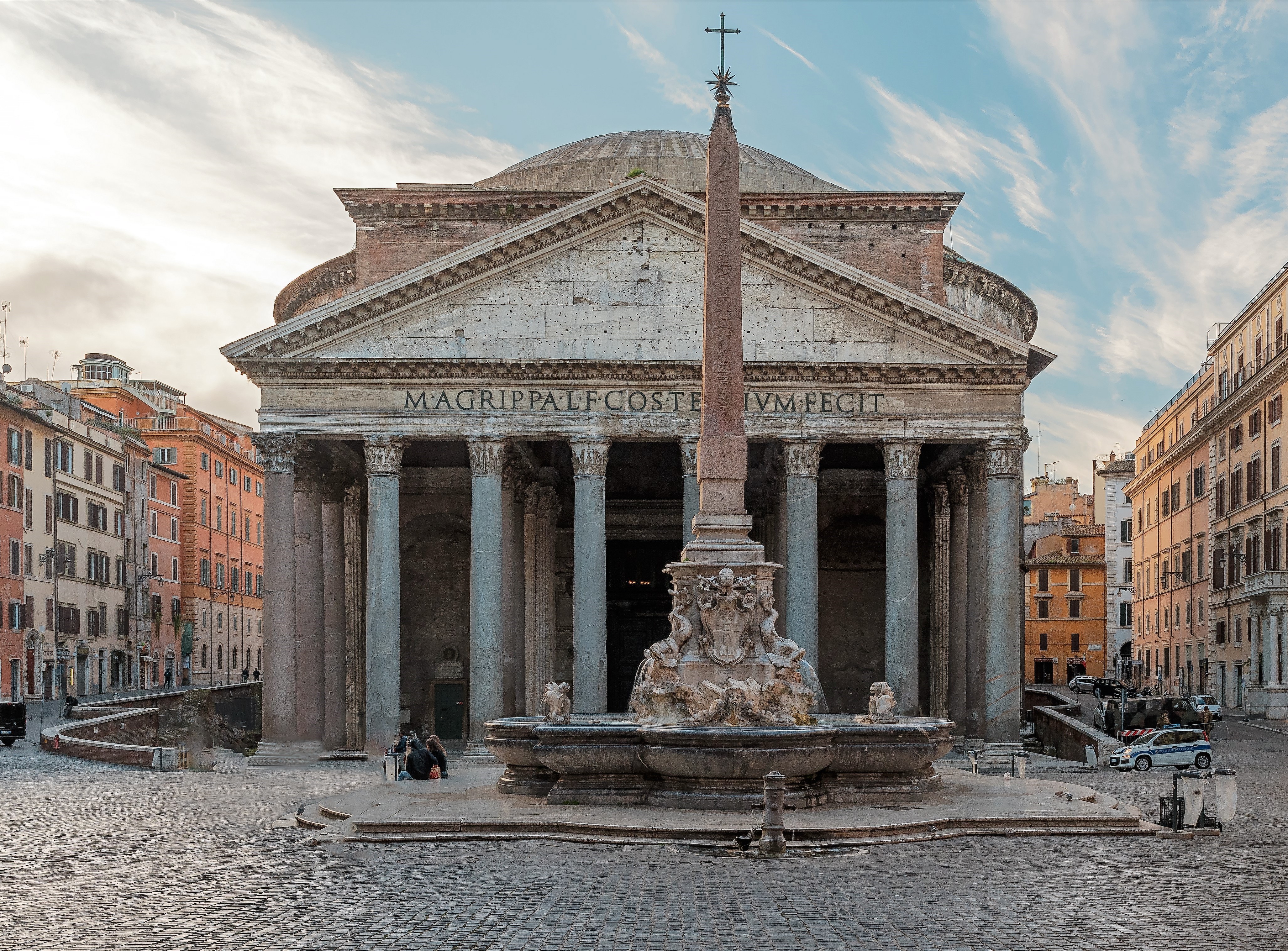
Rome
113–125 CE
Palladio’s dome, for example, complements the overall design rather than dominating it and is topped with a heavy lantern, in the style of Florence Cathedral and St. Peter’s Basilica, versus the open oculus of the Pantheon. The villa also serves a secular function, rather than a religious one, as was the case with many earlier domed structures.
Palladio's influence extended far beyond Italy, largely through his architectural treatise, I Quattro Libri dell'Architettura (The Four Books of Architecture), published in 1570. This work systematically presented his architectural theories, designs, and practical advice, making it widely accessible to architects and builders. The treatise played a crucial role in spreading Palladian architecture, a style based on his principles, across Europe and later to the United States in Thomas Jefferson’s plantation at Monticello in Virginia.
Source: THIS TUTORIAL WAS AUTHORED BY IAN MCCONNELL AND TAMORA KOWALSKI FOR SOPHIA LEARNING. PLEASE SEE OUR TERMS OF USE.